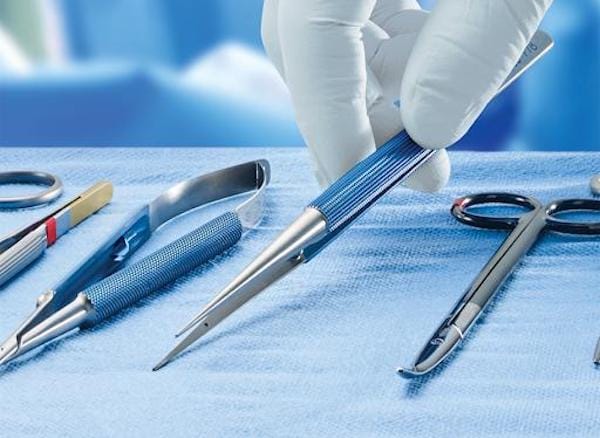Modern precision machining along with multi-axis machining technology and digital manufacturing give us a new forefront of manufacturing surgical parts. The surgical procedure involves long hours of procedures that need highly accurate components facilitated by modular design and accurate parts integrations.
Multi-axis machining especially CNC parts manufacturing technique insurance highly precise Intricate designs with refined components ergonomics and user comfort by reducing fatigue caused by traditional surgical parts. Further in this article, we will deeply explain the technical benefits that these advanced machining practices bring to the medical instruments CNC parts manufacturing domain.
Enhancing Ergonomics of Surgical Scissors
The manufacturing of ergonomic surgical scissors begins with a deep understanding and movements of human hand anatomy. Firstly, the designers made 3D model sketches of scissors with the help of CAD software, and real-time simulations such as Finite element analysis were performed for strength and adaptability. Appropriate grip size, handle shape, and blade alignment are designed as per ergonomic standards and feedback from surgeons.
Once the design is finalized, Precision engineering techniques, are used to craft the metal components. For surgical components usually stainless steel is used as a raw material. The CNC machine is programmed to cut the blades, hinges, and pivot points with an appropriate feed rate as per design. High-speed milling and turning operations are performed with mostly carbide end tools, due to their toughness and wear-resistance properties. The milling operation is performed at a slow speed so that it will remove material in small increments and ensure dimensional accuracy.
Lastly, injected molded handles are employed, as injection molding enhances the ergonomic properties of the instruments. Its ability to create replicate textures, and customize designs and patterns, with contours that fit comfortably in the hand reduces fatigue and improves control during surgeries. A perfect precision machined 3D modeled mold is created precisely and molten material thermoplastic materials are injected into it to create models with finger grooves and non-slip surfaces. Materials are carefully selected as they are the deciding factor in optimizing grip and shock absorption properties. Moreover, the thermoplastic material can hold its ergonomic properties over repeated use and sterilization cycles.
Instrument Maneuverability Laparoscopic Graspers
CNC milling and Swiss machining process play a pivotal role in the manufacturing of lightweight and durable laparoscopic graspers. With the synergy of CNC machining and CAD modeling, engineers can create models by analyzing factors such as stress distribution, material wastage, and overall weight. Precision machining techniques like high-speed milling can cut material at significantly higher speeds and feed rates. This will ultimately reduce the overall weight of the component while maintaining the structural integrity.
Similarly, with 5-axis machines, the manufacturers have the flexibility to cut materials at different angles and orientations. The ability to cut groves and undercuts at different angles without the necessity for multiple setups minimizes waste and improves strength to strength-to-weight ratio. Moreover, 5-axis machining also gives overall control over tool paths, angles, and the use of multiple tool sets.
Material selection is also a key factor in weight reduction and enhancing maneuverability within confined surgical laparoscopic graspers. Titanium and aluminum alloys offer exceptional strength-to-weight ratios, durability, and resilience are the best choice. The lightweight components enhance maneuverability and make instruments easier to handle and maneuver even in confined surgical spaces.
For complex surgical instruments like laparoscopic graspers, Swiss machining practices are very favorable. Swiss machining allows intricate structures and complex features like thin walls and tubular structures and highly optimized internal channels and passages. Swiss machining uses a sliding headstock lathe that is equipped with multiple cutting tools. These tools are mounted on the tool heads and able to move along the length of the workpiece. This setup allows for simultaneous machining operations such as turning, drilling, and milling operations in a single setup unit. For these types of advanced precision machining crafting complex geometries is quite easy.
Enhancing Instrument Integration and Modular Design
One of the primary purposes of precision machining is to enhance instrument integration and design through the manufacturing of precise matting surfaces and joints. Intricate structures such as dovetails, slots, and threads which need to be precisely fit and have minimum tolerance are manufactured through precision machining techniques.
Multi-axis CNC machining enables manufacturers to create custom tool paths as per specific design parameters. With these machinery manufacturers can precisely program the tool paths and ensure that it follows the exact contours and dimensions specified in the digital design.
This precision of CNC machining allows the manufacturers to optimize the Instrument Integration of complex structures like surgical retractors. The precisely manufactured components like ratcheting mechanisms, adjustable arms, and swiveling joints that make up this process easily adjust the configuration of the instrument according to the specific anatomical requirements
Moreover, 3D printing technology is also a very good option for increasing instrument Integration. The 3D printing technology uses layer-by-layer deposition of materials to create intricate structures precisely as per digital designs. The components made from this stereolithography technique have enhanced Instrument Integration with minimum material losses. Moreover, the ability of 3-D printing technology of material diversity made him ideal for the manufacturing of instrument prototypes, surgical implants, and surgical robot parts.
Surface Finish for Biocompatibility
The key factor in achieving this high level of precision is the precise tool path control that CNC ensures. This smooth tool path even in intricate shapes results in surfaces devoid of imperfections. This level of imperfection is crucial especially when you are dealing with titanium and steel the most important surgical tool materials.
In the meantime, the choice of appropriate cutting tools also has a significant impact. Cutting tools with specific designs and coatings as per the workpiece with accurate cutting speed and feed rate ensures the desired surface finish is achieved consistently across instrument components.
For instance, the manufacturing of orthopedic instruments, such as hip implants, and CNC parts manufacturing ensures the creation of precisely contoured surfaces. Here surface finishing techniques like after-machining practices help to eliminate tool marks and imperfections. Further, polishing enhances the bio-compatibility of the implant, reducing the risk of wear-related complications within the joint.
Also Read=Significance of Translation Services for Global Business Expansion?
Conclusion
Precision machining techniques like CNC parts manufacturing and multi-axis machining along with digital manufacturing techniques play are crucial role in manufacturing surgical instruments that are not only durable but also ergonomic, biocompatible, lightweight, and maneuverable. As this manufacturing involves a lot of customization the right experts and Manufacturing specialists should be chosen carefully.




